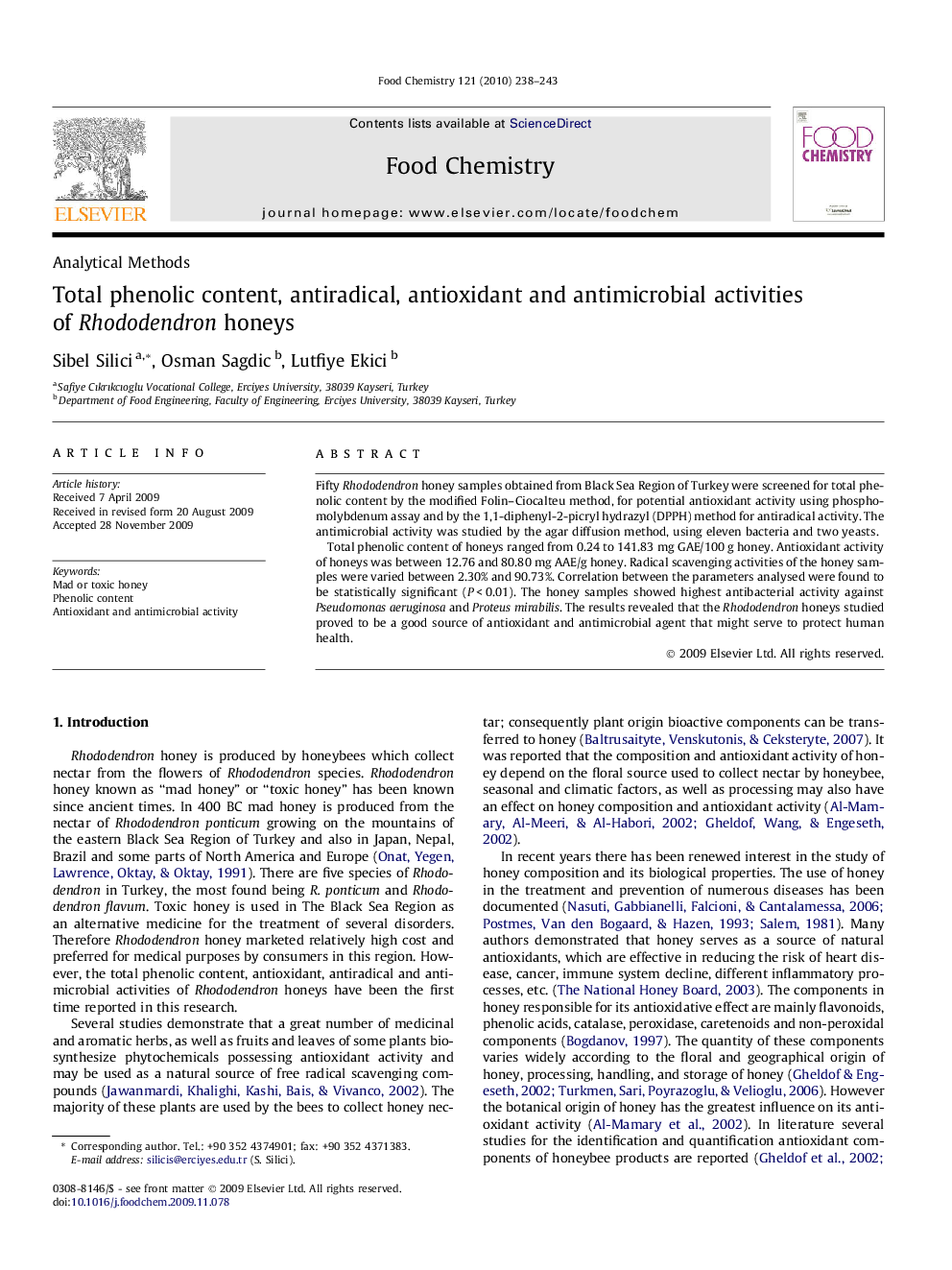| Article ID | Journal | Published Year | Pages | File Type |
|---|---|---|---|---|
| 1185317 | Food Chemistry | 2010 | 6 Pages |
Fifty Rhododendron honey samples obtained from Black Sea Region of Turkey were screened for total phenolic content by the modified Folin–Ciocalteu method, for potential antioxidant activity using phosphomolybdenum assay and by the 1,1-diphenyl-2-picryl hydrazyl (DPPH) method for antiradical activity. The antimicrobial activity was studied by the agar diffusion method, using eleven bacteria and two yeasts.Total phenolic content of honeys ranged from 0.24 to 141.83 mg GAE/100 g honey. Antioxidant activity of honeys was between 12.76 and 80.80 mg AAE/g honey. Radical scavenging activities of the honey samples were varied between 2.30% and 90.73%. Correlation between the parameters analysed were found to be statistically significant (P < 0.01). The honey samples showed highest antibacterial activity against Pseudomonas aeruginosa and Proteus mirabilis. The results revealed that the Rhododendron honeys studied proved to be a good source of antioxidant and antimicrobial agent that might serve to protect human health.
